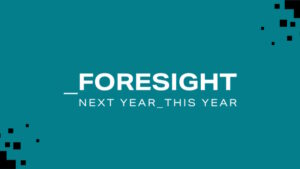The launch of the second wave of ISBA’s landmark Programmatic Supply Chain Transparency Study with PwC painted an incredibly positive picture of the programmatic advertising industry.
The initial report in 2020 was a hammer blow for the industry, finding only half of advertiser spend made it to publishers and 15% of spend could not be attributed aka the ‘unknown delta’.
Today’s announcement makes for much more heartening reading. That unknown delta that did so much to damage programmatic’s reputation has now been slashed to just 3%, with proportion of advertiser spend reaching publishers risen by 8%.
The detailed findings of the report are below and it has been covered widely already but NDA’s view is that this study should be seen as a shining example of the power of cross-industry collaboration. Plaudits are due to all at PwC, ISBA, and The AOP who worked so tirelessly to acheive these results, which should go far to reassure advertisers in the trustworthiness of programmatic advertising.
Speaking to NDA, both Sam Tomlinson, PwC’s media and internment leader, who led the research project, and O’Brien. Head of Media, Effectiveness and Performance at ISBA, were keen to stress there was still much work still to be done. “It’s not job done,” said Tomlinson.
While this is undeniably true, the new study is at the same time a huge achievement for the entire programatic industry and should be seen as an important step for an industry often bedevilled by accusations of obfuscation and lack of transparency.
And while this study was, like the first, restricted to the premium end of the market, as both Claire and Sam were keen to highlight, it sends a powerful message to the entire industry and sets a benchmark that should hopefully trickle down to impact the long tail too.
In summary, this is a very good day for the programmatic advertising industry.
Key findings
- Improvements in data access successfully halved the time required to conduct the study to nine months (vs 18 months for the 2020 study).
- Greater standardisation of data quality improved the ad impression match rate to 58% (vs 12% in 2020) and the unattributable ad spend (AKA the unknown delta) was reduced to 3% (vs 15% in 2020).
- The proportion of advertiser spend reaching publishers has risen by 8%.
- The Programmatic Financial Audit Toolkit (the Toolkit) launched in February 2022 has been proven to be of significant benefit to the audit process.
- However, the improvements are not consistent, and the industry needs to continue its collaboration to make financial audits a routine feature of the market.
– The Study’s principal findings show a nearly fivefold improvement in the match rate of impression data (from DSP to SSP) from 12% in the 2020 study to 58%, and a significant reduction in the size of the unattributable spend, to 3% in this 2022 study.
– PwC’s team of specialists running the Study had to work closely with the DSPs and SSPs on data filtering and transfer in order to arrive at complete and accurate data sets, which in turn led to this significant reduction in the unattributable spend. ISBA believes advertisers and publishers should be able to expect the process of data filtering and sharing to be smoother in the future.
– More specifically, this 2022 study has uncovered notable differences in the delta between open marketplaces 3%) and private marketplaces (<1%), reflecting the benefit of investments by advertisers, their agencies, tech vendors and publishers in well-curated auditable private marketplaces.
– A promising improvement was that all adtech vendors were able to provide log level rather than aggregate data, a key factor in producing the much improved 58% ad impression match rate. Importantly, unlike in 2020, there is now good reason to believe the unmatched impressions in this study would exhibit similar results to the matched ones.
You can read the summary here along with the list of participants.









